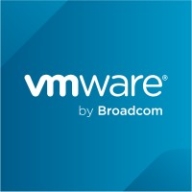

Azure Red Hat OpenShift and VMware Tanzu Platform are competitors in the enterprise cloud application market. Azure Red Hat OpenShift is seen as more cost-effective, while VMware Tanzu Platform is preferred by those seeking extensive features.
Features: Azure Red Hat OpenShift offers seamless Azure service integration, strong developer tools, and automated updates, enhancing usability. VMware Tanzu Platform provides excellent Kubernetes management, a robust container system, and advanced DevOps capabilities for high customization and control.
Room for Improvement: Azure Red Hat OpenShift could enhance its advanced feature set to match the breadth of VMware Tanzu Platform and offer greater customization. It might also benefit from improved integration capabilities outside Azure. VMware Tanzu Platform's complexity may challenge users without technical expertise and its cost may be prohibitive for some organizations.
Ease of Deployment and Customer Service: Azure Red Hat OpenShift boasts quick deployment and reliable customer service within its integrated Azure environment, aiming for simplicity. VMware Tanzu Platform, though also rapid in deployment with extensive documentation, demands more technical know-how due to its complex feature set.
Pricing and ROI: Azure Red Hat OpenShift presents predictable costs through a clear pricing strategy, appealing to budget-conscious buyers, while VMware Tanzu Platform, with its more premium price, justifies the expenditure through feature richness and long-term scalability benefits leading to potentially high ROI.
| Product | Market Share (%) |
|---|---|
| VMware Tanzu Platform | 3.5% |
| Azure Red Hat OpenShift | 0.7% |
| Other | 95.8% |


| Company Size | Count |
|---|---|
| Small Business | 1 |
| Midsize Enterprise | 3 |
| Large Enterprise | 7 |
| Company Size | Count |
|---|---|
| Small Business | 10 |
| Midsize Enterprise | 3 |
| Large Enterprise | 9 |
Azure Red Hat OpenShift provides highly available, fully managed OpenShift clusters on demand, monitored and operated jointly by Microsoft and Red Hat. Kubernetes is at the core of Red Hat OpenShift. OpenShift brings added-value features to complement Kubernetes, making it a turnkey container platform as a service (PaaS) with a significantly improved developer and operator experience.
VMware Tanzu Platform is designed for cloud-native development and management of Kubernetes, CI/CD processes, microservices, and containerized workloads. It supports deployments both on cloud and on-premises, providing centralized management via Mission Control.
VMware Tanzu Platform offers seamless integration with vSphere, ESX, and vSAN, supporting centralized cluster management and lifecycle management. The platform provides a GUI for monitoring CI/CD pipelines and network policies, enhancing multi-tenancy and Day 2 operations. Users can easily manage Kubernetes clusters, monitor applications, and integrate with tools such as GitHub, GitLab, Cloud Foundry, and Azure. It ensures compliance and security for service providers, financial institutions, and businesses.
What are the key features of VMware Tanzu Platform?
What benefits and ROI should users look for in VMware Tanzu Platform reviews?
Industries such as financial institutions, service providers, and businesses requiring rigorous compliance and security deploy VMware Tanzu Platform. These entities benefit from centralized management, streamlined DevOps processes, and integrated tools, enhancing their capabilities in cloud-native developments and containerized workloads.
We monitor all PaaS Clouds reviews to prevent fraudulent reviews and keep review quality high. We do not post reviews by company employees or direct competitors. We validate each review for authenticity via cross-reference with LinkedIn, and personal follow-up with the reviewer when necessary.